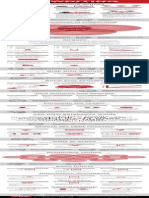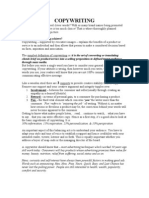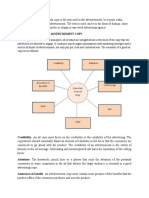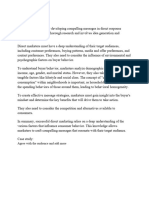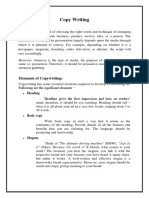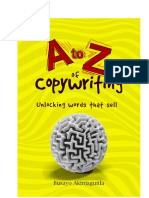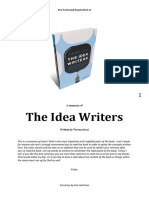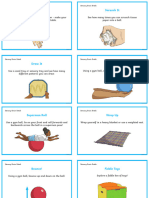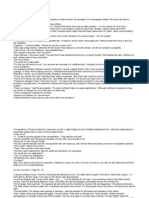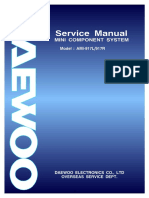0% found this document useful (0 votes)
33 views11 pagesCopywriting Notes
The document outlines the fundamentals of copywriting, emphasizing its role in persuasion and marketing. It details the objectives of copywriting, the importance of a unified campaign message, and the structure of print and screen writing. Additionally, it covers writing for radio, highlighting the need for engaging content tailored to the medium's unique characteristics.
Uploaded by
sivaCopyright
© © All Rights Reserved
We take content rights seriously. If you suspect this is your content, claim it here.
Available Formats
Download as PDF, TXT or read online on Scribd
0% found this document useful (0 votes)
33 views11 pagesCopywriting Notes
The document outlines the fundamentals of copywriting, emphasizing its role in persuasion and marketing. It details the objectives of copywriting, the importance of a unified campaign message, and the structure of print and screen writing. Additionally, it covers writing for radio, highlighting the need for engaging content tailored to the medium's unique characteristics.
Uploaded by
sivaCopyright
© © All Rights Reserved
We take content rights seriously. If you suspect this is your content, claim it here.
Available Formats
Download as PDF, TXT or read online on Scribd
/ 11





